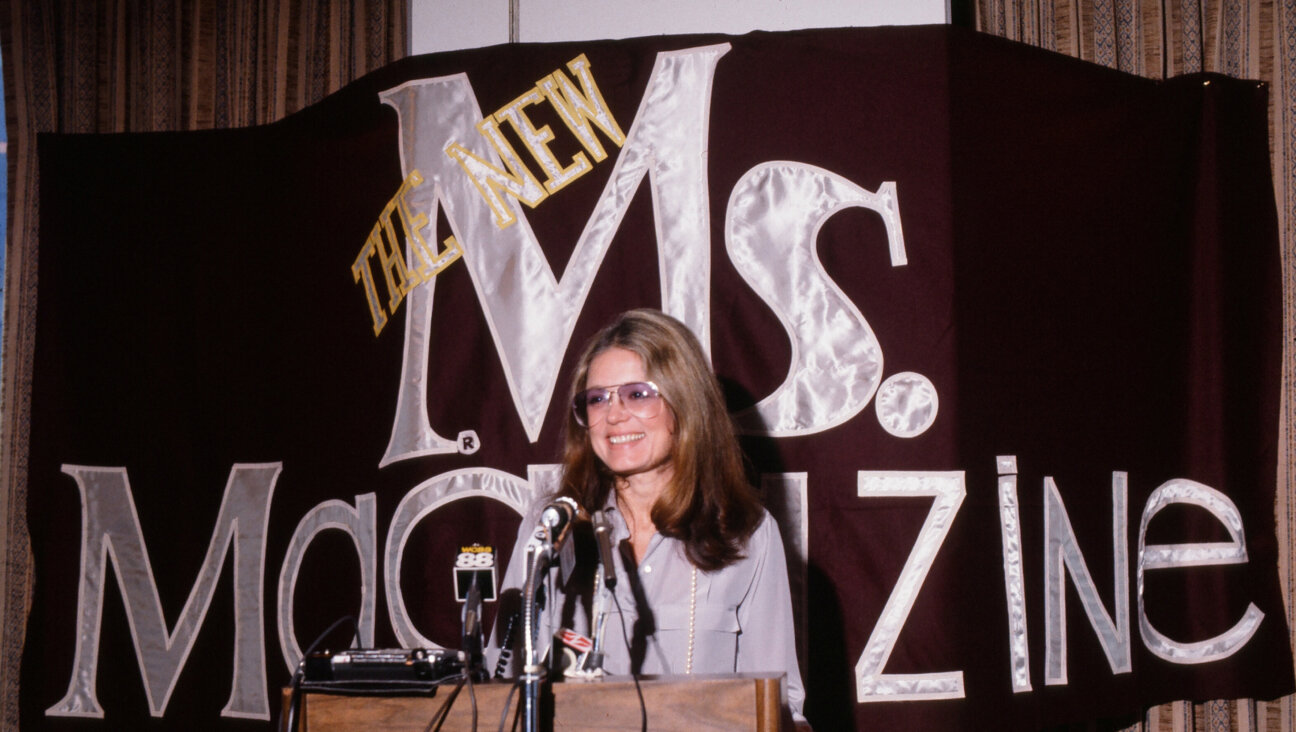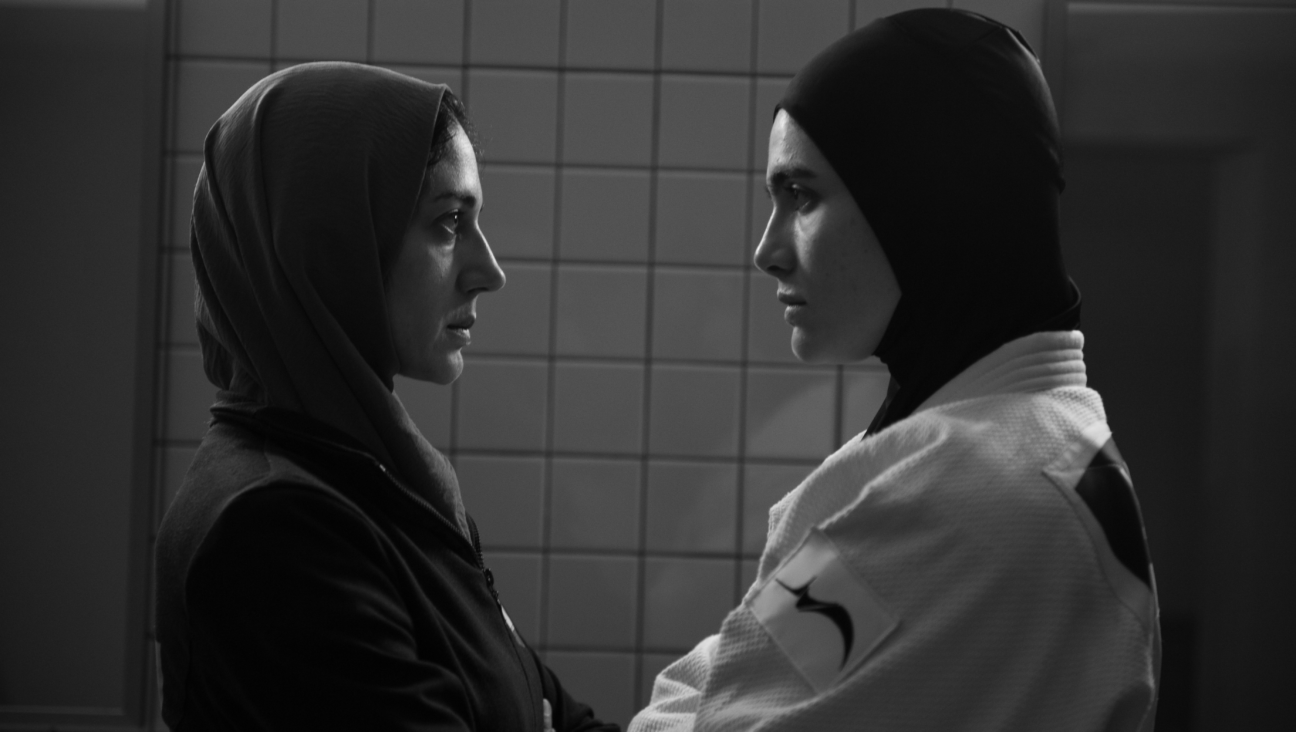Last Surviving ‘Casablanca’ Actor Dies — Along With a Slice of Jewish History

Graphic by Angelie Zaslavsky
When Madeleine Lebeau, the last surviving actress from the film “Casablanca” (1942) died earlier this month at age 92, she took with her more than film history. Her screen role as Yvonne, Humphrey Bogart’s discarded mistress, was twinned with her real-life role as the wife of French Jewish actor Marcel Dalio (1899–1983). Dalio was born Israel Moshe Blauschild, of Romanian Jewish origin. He was also in “Casablanca,” in the minor part of the casino dealer, but his career had once been more noteworthy. Shortly before the fortyish actor wooed and married the 16-year-old Lebeau, he starred in two French films by Jean Renoir routinely listed among the greatest ever made: “La Grande Illusion” (1937) and “The Rules of the Game” (1939). In the former, he played Lieutenant Rosenthal, a French Jewish prisoner of war who is generous with his wealth. In the latter, he played Robert de la Chesnaye, a French aristocrat. This bit of casting was decried by a chorus of pre-war French anti-Semites, including the author Pierre Drieu La Rochelle, critic Maurice Bardèche, and novelist Louis-Ferdinand Céline.
In Bardèche’s “History of Film,” co-authored with his brother-in-law Robert Brasillach, Dalio’s performance in “Rules of the Game” is described: “The astonishing Dalio, more Jewish than ever, both alluring and sordid, dominates it all like a hunchbacked ibis in the middle of a swamp…a different smell rises from him from time immemorial, another race which does not go hunting, which owns no chateaus… Perhaps never has the strangeness of the Jew been so strongly and brutally shown.”
This type of review, common in France of the 1930s and 1940s, typed Madeleine Lebeau’s husband not just as another Jewish actor, but the very symbol of the Jew. Indeed, as soon as the Nazis invaded France and the Vichy government was established, film stills of Dalio in several roles were made into a composite poster image displayed in Paris streets to educate the public on how to spot a “typical Jew” in order to alert the authorities. By then, Mr. and Mrs. Dalio had managed to escape to America. Their path to freedom was not easy, but their fate was better than Dalio’s mother and sisters, all murdered in Auschwitz. Dalio’s Jewish face was such anathema to France’s Nazi collaborationist film industry that before his 1938 film “Entrée des artistes,” could be re-released in 1944, all of his scenes were reshot with an Aryan-looking actor, although to save money on the soundtrack, Dalio’s voice was retained speaking the lines.
Once in Hollywood, Dalio was handicapped by his rudimentary grasp of English. Director Josef von Sternberg (born Jonas Sternberg to an Austrian Jewish family) cast him in the now-iconic film noir “The Shanghai Gesture,” (1941), in which Dalio had a bit part as a croupier. In “Casablanca,” Madeleine Lebeau led a café full of French émigrés in a chorus of “La Marseillaise,” drowning out a gang of singing Nazis and shouting “Vive la France!” The stirring episode took on new life, reposted on YouTube as a viral video in the wake of the 2015 terrorist attacks against Paris. As for Dalio, some sources claim that Warner Brothers first considered him for the part of the Vichy French officer Captain Louis Renault, but his heavy accent and still-shaky English disqualified him, opening the way for Claude Rains to excel in the part, albeit with a more British than Gallic sensibility. By the time “Casablanca” was released, Lebeau and Dalio were divorced. Nevertheless, they acted together again in the French Resistance drama “Paris After Dark” (1943) directed by Léonide Moguy, the Russian Jewish filmmaker who would later inspire Quentin Tarantino’s “Inglourious Basterds.”
Eager to return to France after the war, Dalio wryly commented in his memoirs that henceforth, he would only be Jewish “during times of peace.” After appearing with Bogart again in “To Have and Have Not,” (1945) Dalio found that in his homeland, he was now only offered roles of characters who were “mad, half-mad, or one-quarter mad.” An exception was a French TV production of “Oliver Twist” (1962) in which he played Fagin rather more sympathetically than usual, perhaps because he was no taller than most of the child actors. Lebeau retired from acting in the mid-60s after marrying an Italian screenwriter, but Dalio struggled on, sometimes landing a small part in a Hollywood extravaganza. One such was Mike Nichols’ “Catch-22” (1970) in which he was cast against type as a 107-year-old Italian bordello keeper. Dalio told Art Garfunkel, equally miscast as a 19-year-old soldier: “You don’t know how to stay alive and that’s the secret of life.” Continuing, Dalio expressed sentiments which were surely not his own, but those of the ancient Italian:
“I was a fascist when Mussolini was on top. Now that he has been deposed, I am anti-fascist. When the Germans were here, I was fanatically pro-German. Now I’m fanatically pro-American. You’ll find no more loyal partisan in all of Italy than myself…It’s better to live on your feet than to die on your knees. I know.”
Dalio’s artistic survival depended on the stage, where he played the title role of a victim of racist attack by hoodlums in a 1971 Paris staging of Israel Horovitz’s play “The Indian Wants the Bronx,” followed by the role of Mr. Cohen, head accountant, in Michel Vinaver’s 1973 play “Overboard,” (Par-dessus bord), partly dealing with how ongoing Gallic anti-Semitism duelled with private regret over the Holocaust. Dalio’s most visible onscreen assumption of Yiddishkeit was as the genuine Rabbi Jacob in the raucous 1973 French comedy of mistaken identity, “The Mad Adventures of Rabbi Jacob.” More quietly, he was cast as a Jewish paterfamilias in the Belgian Jewish director Maurice Rabinowicz’s “One Page of Love” (1978) about a young Jewish lawyer (Sami Frey) who breaks out of stifling family routine. By then, Dalio’s career featured interludes in oddly scroungy and bizarre porn films, such as the Polish director Walerian Borowczyk’s ode to bestiality, “La bête” (1975). These unfortunate appearances did not lessen Dalio’s legendary status aura in the French film world. When he was buried at the Cimetière parisien de Bagneux outside Paris, known as The Jewish Cemetery, although his ex-wife Lebeau was not present, friends and colleagues were there. They included the French Jewish actors Simone Signoret (born Kaminker) and Jean-Pierre Aumont (born Salomons).
Benjamin Ivry is a frequent contributor to the Forward.
























